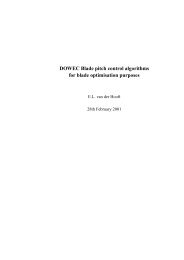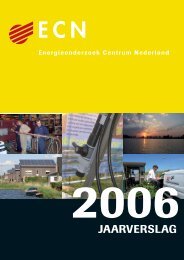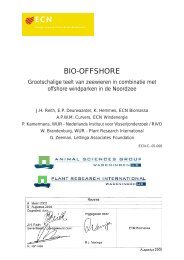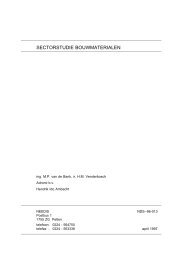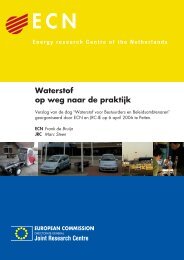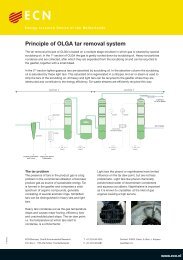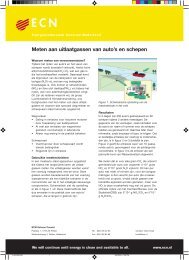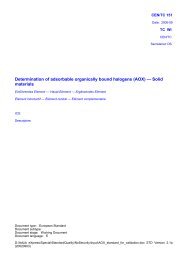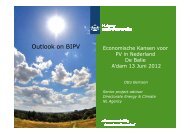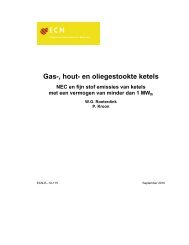PDF format (503 kB) - ECN
PDF format (503 kB) - ECN
PDF format (503 kB) - ECN
You also want an ePaper? Increase the reach of your titles
YUMPU automatically turns print PDFs into web optimized ePapers that Google loves.
Emission mitigation options<br />
The following improvement options are considered within the materials life cycle:<br />
1. Increased energy efficiency: new production technology<br />
2. Increased materials efficiency: increased materials quality<br />
3. New recycling technologies<br />
4. Cascading: waste separation and product re-use<br />
5. New energy recovery technologies for waste materials<br />
6. Substitution of energy carriers for materials production<br />
7. Substitution of natural resources/feedstocks<br />
8. Substitution of materials/product re-design<br />
9. End-of-pipe technology for catalytic and thermal conversion of CH4 (from landfill sites)and N2O (from<br />
nitric acid and adipic acid production) and removal and underground storage for CO2 (for iron, cement<br />
clinker and ammonia production)<br />
The list covers all stages of the materials life cycle “from cradle to grave”. The list covers strategies that are<br />
currently not applied because of technological problems or because they are not cost-effective. R&D can overcome<br />
the technological barriers; the cost-effectiveness of alternatives may change in the future if GHG emissions<br />
are penalized, or if environmentally friendly alternatives are subsidized.<br />
Improvement strategies that affect the consumer lifestyle or that affect the product performance have not been<br />
considered. The problems regarding their implementation is beyond the scope of techno-economic optimization<br />
and cannot be analyzed fruitfully with a techno-economic optimization model. In order to show the impact of<br />
lifestyle and economic growth, a number of demand scenarios have been analyzed.<br />
The reference scenario in this paper is based on a 5% discount rate, moderate economic growth, and moderate<br />
estimates for demand growth. Key scenario parameters for demand growth are shown in Table 2.<br />
Table 2 Demand scenario parameters<br />
1990 2010 2040<br />
Passenger cars 100 128 176<br />
Trucks 100 124 164<br />
Single family residences 100 115 130<br />
Residential other electricity 100 233 378<br />
Commercial electricity 100 133 178<br />
Results<br />
In order to analyze the contribution of the materials system for the total GHG emissions, two base case runs are<br />
presented. One includes the demand for materials (E+M), the other excluded the materials demand categories<br />
(E). The difference represents the contribution of the materials system to the GHG emissions (somewhat underestimated,<br />
because biogenous carbon storage in products and disposal sites is subtracted from the materials<br />
system emissions). This is shown in Figure 6. The figure shows that the calculated emissions are in line with<br />
the bottom-up estimates regarding the relevance of the materials system. Figure 6 shows that both emissions in<br />
the materials system and emissions in the energy system increase in time.



